Frontier Centre for Public Policy
The Great Canadian Hoax exposed
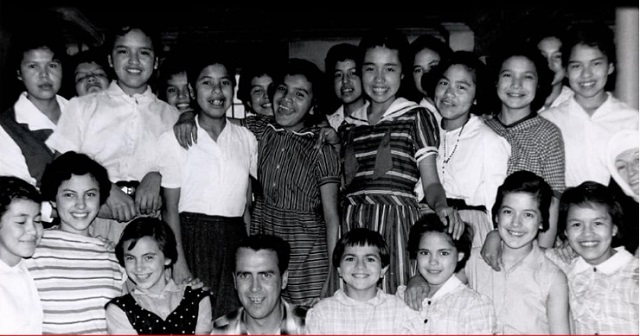
From the Frontier Centre for Public Policy
Grave Error: How The Media Misled Us (and the Truth about Residential Schools) edited by C.P. Champion and Tom Flanagan, Truth North and Dorchester Review, 343pp, $21.99) is a companion volume to Frontier’s From Truth Comes Reconciliation, which was published in 2021 (second edition is forthcoming). The two reviews published here are by Colin Alexander and Peter Best. The book demonstrates that there is no forensic evidence of Indian Residential School children that have been murdered and buried in residential school yards. There are a number of reasons for not believing the claim that children were murdered in these schools. Canadians are anxious to know the truth about the schools, and this book along with Frontier’s book go a long way to dispel the myths that have developed about the murder of residential school children. The book has been a top seller on Amazon since it was published in early January 2024.
This scholarly book of essays demolishes the narrative that any children went missing from Indian residential schools (IRS), let alone thousands, or that there are mass graves. Grave Error, in fact, debunks what essayist Jonathan Kay calls “a media-fuelled social panic over unmarked graves.” Mainstream media around the world—not just in Canada—ran with this press release issued on May 27, 2021:
This past weekend, with the help of a ground penetrating radar [GPR] specialist, the stark truth of the preliminary findings became known – the confirmation of the remains of 215 children who were students at the Kamloops Indian Residential School [KRS]. …
To our knowledge, these missing children are undocumented deaths,” stated Kukpi7 Rosanne Casimir. “Some were as young as three years old. …
Mainstream news media and politicians took the press release to heart, with Prime Minister Justin Trudeau lowering flags on federal buildings to half-mast for six long months. So debauched have the Enlightenment’s principles of inquiry become, along with those of responsible journalism, that it took outsiders to question the truth of this release.

Yes, Ground Penetrating Radar (GPR) found disturbed ground in the orchard near the school. That is because the land had buried drainage tiles from a septic system that had been installed in 1924. In any case, except for orphans and those whose upbringing was beyond their parents’ capacity, the IRS required a minimum age of six for admission.
No children were murdered and buried surreptitiously at night. Schools were paid on a headcount of children, so there was not a single name unaccounted for. There is a death certificate for every death, with burials either in the nearby cemetery or returned to their reserves. TB and other communicable diseases rampant everywhere caused most IRS deaths a century ago. Since the introduction of antibiotics, the death toll has been much lower. Many graves in recognized cemeteries are unmarked because the customarily used wooden crosses deteriorated over time. Despite that, in December 2021, Canadian Press called unmarked graves the story of the year!
Len Marchand’s autobiography, Breaking the Trail, provides an antidote for the horror stories at KRS. A former attendee during the time of the alleged murders and burials, he became Canada’s first Indigenous cabinet minister. The worst he says of his time there was that meals included mushy potatoes.
Essayist Ian Gentles says the juggernaut of misinformation began with the CBC program The Journal on October 30, 1990. Interviewed by Barbara Frum, Grand Chief of the Assembly of First Nations, Phil Fontaine, said he had been physically and sexually abused at his school. This led to a tsunami of former IRS attendees asserting similar allegations. Unfortunately, Ms. Frum did not ask who perpetrated the abuse, whether staff or fellow students. Or why he did not make a complaint to the police. I emailed Mr. Fontaine asking those questions but without receiving an answer.
Some essayists accept the proposition that there were real atrocities. I am not sure they were widespread. There were only a few successful prosecutions reported by the Truth and Reconciliation Commission. There are probably some abuses at boarding schools. Was it really an atrocity to cut an IRS attendee’s hair on arrival or to exchange a uniform for an orange shirt? Essayist and former staff member at Stringer Hall in Inuvik, Rodney Clifton, has described children on their return after the summer break with their families. They were often in poor physical condition, and some were still wearing the clothing, unwashed in the meantime, that they left the school with.
Essayist Tom Flanagan scores a bull’s-eye when quoting John Ioannidis, medical researcher at Stanford University: “The greater the financial and other interests and prejudices in a scientific field, the less likely the research findings are to be true.” With money almost unlimited for Indigenous issues, a multi-billion-dollar industry has grown out of pleading for money and telling Indigenous youth to feel sorry for themselves. By extension, the industry has prospered from laying guilt on schoolchildren and taxpayers. As shown in Lonely Death of an Ojibwa Boy by Robert MacBain, that includes what I construe to be a fraud, the Gord Downie and Chanie Wenjack charity.
I also disagree with essayists saying the Indigenous were dealt a bad hand, let alone that they need new treaties. What about the previously downtrodden Asian Canadians who have surpassed their white counterparts in incomes? Yes, Canada welcomed Indians into the armed forces for the Boer Wars and the two World Wars, only to treat them like dirt when the wars ended. But today there has been a role-reversal. Now Indigenous leaders can say whatever they want, and no one calls them out on saying outrageous things.
To me, the failure of Canada’s Indigenous policy derives from the excesses of the welfare state which, since the demise of the fur trade, destroyed self-reliance and work ethic—Indigenous cultures were destroyed, if you will. Now Canadians kowtow to demands for renewed tribalism and self-determination resembling South Africa’s apartheid. That would give leaders prestige and money for doing little. For followers, it connotes marginalization and second-class citizenship. No one is considering the needs of next generations living in violence-wracked settlements having no economic reason to exist, and in urban slums. It eludes notice that those who are educated and skilled and engaged in or preparing for rewarding employment seldom become addicts or commit suicide, and they seldom go to jail.
The billions paid out for the IRS and mass graves hoaxes are not delivering acceptable housing or any other help that works. I know an unemployed and all but unemployable Inuk who got a cheque for $95,000 in April 2023. By July he had blown it all and was again scrounging for cigarettes. Many billions add to GDP and salve a nation’s conscience. But enriching prostitutes and drug dealers does not address real needs.
That said, there are templates, notably in Asia, for raising Third World peoples into the First World in a single generation. I recommend Grave Error as a starting point for radically different thinking about what needs to be done to help Indigenous Canadians succeed in our country.
Colin Alexander was publisher of the Yellowknife News of the North for many years, and the advisor on education for Ontario’s Royal Commission on the Northern Environment. His latest book is Justice on Trial: Jordan Peterson’s case and others show we need to fix a broken legal system.
Frontier Centre for Public Policy
Tent Cities Were Rare Five Years Ago. Now They’re Everywhere

From the Frontier Centre for Public Policy
Canada’s homelessness crisis has intensified dramatically, with about 60,000 people homeless this Christmas and chronic homelessness becoming entrenched as shelters overflow and encampments spread. Policy failures in immigration, housing, monetary policy, shelters, harm reduction, and Indigenous governance have driven the crisis. Only reversing these policies can meaningfully address it.
Encampments that were meant to be temporary have become a permanent feature in our communities
As Canadians settle in for the holiday season, 60,000 people across this country will spend Christmas night in a tent, a doorway, or a shelter bed intended to be temporary. Some will have been there for months, perhaps years. The number has quadrupled in six years.
In October 2024, enumerators in 74 Canadian communities conducted the most comprehensive count of homelessness this country has attempted. They found 17,088 people sleeping without shelter on a single autumn night, and 4,982 of them living in encampments. The count excluded Quebec entirely. The real number is certainly higher.
In Ontario alone, homelessness increased 51 per cent between 2016 and 2024. Chronic homelessness has tripled. For the first time, more than half of all homelessness in that province is chronic. People are no longer moving through the system. They are becoming permanent fixtures within it.
Toronto’s homeless population more than doubled between April 2021 and October 2024, from 7,300 to 15,418. Tents now appear in places that were never seen a decade ago. The city has 9,594 people using its shelter system on any given night, yet 158 are turned away each evening because no beds are available.
Calgary recorded 436 homeless deaths in 2023, nearly double the previous year. The Ontario report projects that without significant policy changes, between 165,000 and 294,000 people could experience homelessness annually in that province alone by 2035.
The federal government announced in September 2024 that it would allocate $250 million over two years to address encampments. Ontario received $88 million for ten municipalities. The Association of Municipalities of Ontario calculated that ending chronic homelessness in their province would require $11 billion over ten years. The federal contribution represents less than one per cent of what is needed.
Yet the same federal government found $50 billion for automotive subsidies and battery plants. They borrow tonnes of money to help foreign car manufacturers with EVs, while tens of thousands are homeless. But money alone does not solve problems. Pouring billions into a bureaucratic system that has failed spectacularly without addressing the policies that created the crisis would be useless.
Five years ago, tent cities were virtually unknown in most Canadian communities. Recent policy choices fuelled it, and different choices can help unmake it.
Start with immigration policy. The federal government increased annual targets to over 500,000 without ensuring housing capacity existed. Between 2021 and 2024, refugees and asylum seekers experiencing chronic homelessness increased by 475 per cent. These are people invited to Canada under federal policy, then abandoned to municipal shelter systems already at capacity.
Then there is monetary policy. Pandemic spending drove inflation, which made housing unaffordable. Housing supply remains constrained by policy. Development charges, zoning restrictions, and approval processes spanning years prevent construction at the required scale. Municipal governments layer fees onto new developments, making projects uneconomical.
Shelter policy itself has become counterproductive. The average shelter stay increased from 39 days in 2015 to 56 days in 2022. There are no time limits, no requirements, no expectations. Meanwhile, restrictive rules around curfews, visitors, and pets drive 85 per cent of homeless people to avoid shelters entirely, preferring tents to institutional control.
The expansion of harm reduction programs has substituted enabling for treatment. Safe supply initiatives provide drugs to addicts without requiring participation in recovery programs. Sixty-one per cent cite substance use issues, yet the policy response is to make drug use safer rather than to make sobriety achievable. Treatment programs with accountability would serve dignity far better than an endless supply of free drugs.
Indigenous people account for 44.6 per cent of those experiencing chronic homelessness in Northern Ontario despite comprising less than three per cent of the general population. This overrepresentation is exacerbated by policies that fail to recognize Indigenous governance and self-determination as essential. Billions allocated to Indigenous communities are never scrutinized.
The question Canadians might ask this winter is whether charity can substitute for competent policy. The answer is empirically clear: it cannot. What is required before any meaningful solutions is a reversal of the policies that broke it.
Marco Navarro-Genie is vice-president of research at the Frontier Centre for Public Policy and co-author with Barry Cooper of Canada’s COVID: The Story of a Pandemic Moral Panic (2023).
Agriculture
The Climate Argument Against Livestock Doesn’t Add Up

From the Frontier Centre for Public Policy
Livestock contribute far less to emissions than activists claim, and eliminating them would weaken nutrition, resilience and food security
The war on livestock pushed by Net Zero ideologues is not environmental science; it’s a dangerous, misguided campaign that threatens global food security.
The priests of Net Zero 2050 have declared war on the cow, the pig and the chicken. From glass towers in London, Brussels and Ottawa, they argue that cutting animal protein, shrinking herds and pushing people toward lentils and lab-grown alternatives will save the climate from a steer’s burp.
This is not science. It is an urban belief that billions of people can be pushed toward a diet promoted by some policymakers who have never worked a field or heard a rooster at dawn. Eliminating or sharply reducing livestock would destabilize food systems and increase global hunger. In Canada, livestock account for about three per cent of total greenhouse gas emissions, according to Environment and Climate Change Canada.
Activists speak as if livestock suddenly appeared in the last century, belching fossil carbon into the air. In reality, the relationship between humans and the animals we raise is older than agriculture. It is part of how our species developed.
Two million years ago, early humans ate meat and marrow, mastered fire and developed larger brains. The expensive-tissue hypothesis, a theory that explains how early humans traded gut size for brain growth, is not ideology; it is basic anthropology. Animal fat and protein helped build the human brain and the societies that followed.
Domestication deepened that relationship. When humans raised cattle, sheep, pigs and chickens, we created a long partnership that shaped both species. Wolves became dogs. Aurochs, the wild ancestors of modern cattle, became domesticated animals. Junglefowl became chickens that could lay eggs reliably. These animals lived with us because it increased their chances of survival.
In return, they received protection, veterinary care and steady food during drought and winter. More than 70,000 Canadian farms raise cattle, hogs, poultry or sheep, supporting hundreds of thousands of jobs across the supply chain.
Livestock also protected people from climate extremes. When crops failed, grasslands still produced forage, and herds converted that into food. During the Little Ice Age, millions in Europe starved because grain crops collapsed. Pastoral communities, which lived from herding livestock rather than crops, survived because their herds could still graze. Removing livestock would offer little climate benefit, yet it would eliminate one of humanity’s most reliable protections against environmental shocks.
Today, a Maasai child in Kenya or northern Tanzania drinking milk from a cow grazing on dry land has a steadier food source than a vegan in a Berlin apartment relying on global shipping. Modern genetics and nutrition have pushed this relationship further. For the first time, the poorest billion people have access to complete protein and key nutrients such as iron, zinc, B12 and retinol, a form of vitamin A, that plants cannot supply without industrial processing or fortification. Canada also imports significant volumes of soy-based and other plant-protein products, making many urban vegan diets more dependent on long-distance supply chains than people assume. The war on livestock is not a war on carbon; it is a war on the most successful anti-poverty tool ever created.
And what about the animals? Remove humans tomorrow and most commercial chickens would die of exposure, merino sheep would overheat under their own wool and dairy cattle would suffer from untreated mastitis (a bacterial infection of the udder). These species are fully domesticated. Without us, they would disappear.
Net Zero 2050 is a climate target adopted by federal and provincial governments, but debates continue over whether it requires reducing livestock herds or simply improving farm practices. Net Zero advocates look at a pasture and see methane. Farmers see land producing food from nothing more than sunlight, rain and grass.
So the question is not technical. It is about how we see ourselves. Does the Net Zero vision treat humans as part of the natural world, or as a threat that must be contained by forcing diets and erasing long-standing food systems? Eliminating livestock sends the message that human presence itself is an environmental problem, not a participant in a functioning ecosystem.
The cow is not the enemy of the planet. Pasture is not a problem to fix. It is a solution our ancestors discovered long before anyone used the word “sustainable.” We abandon it at our peril and at theirs.
Dr. Joseph Fournier is a senior fellow at the Frontier Centre for Public Policy. An accomplished scientist and former energy executive, he holds graduate training in chemical physics and has written more than 100 articles on energy, environment and climate science.
-

 International2 days ago
International2 days agoGeorgia county admits illegally certifying 315k ballots in 2020 presidential election
-

 Energy2 days ago
Energy2 days ago‘The electric story is over’
-
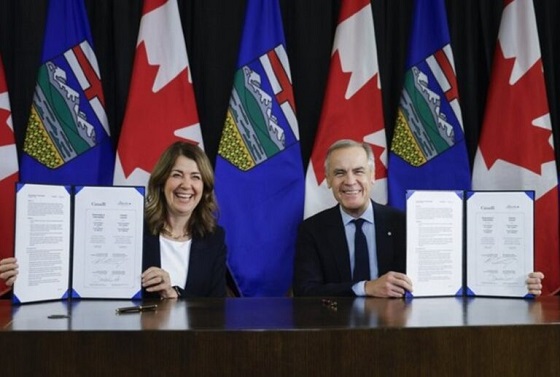
 Energy2 days ago
Energy2 days agoThe Top News Stories That Shaped Canadian Energy in 2025 and Will Continue to Shape Canadian Energy in 2026
-

 Daily Caller1 day ago
Daily Caller1 day agoUS Halts Construction of Five Offshore Wind Projects Due To National Security
-
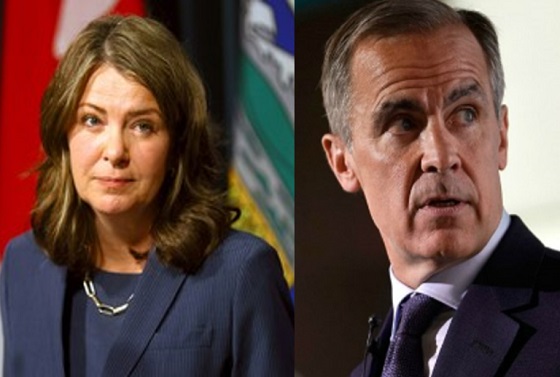
 Alberta1 day ago
Alberta1 day agoAlberta Next Panel calls for less Ottawa—and it could pay off
-

 Daily Caller1 day ago
Daily Caller1 day agoWhile Western Nations Cling to Energy Transition, Pragmatic Nations Produce Energy and Wealth
-
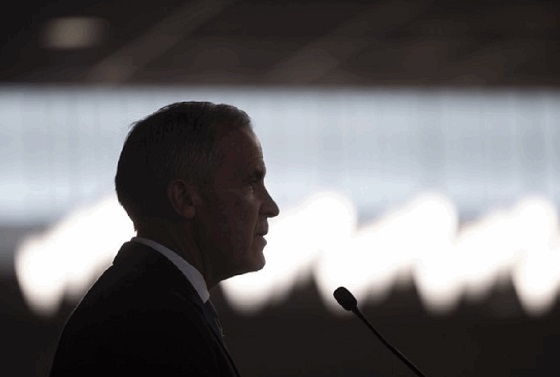
 Fraser Institute2 days ago
Fraser Institute2 days agoCarney government sowing seeds for corruption in Ottawa
-
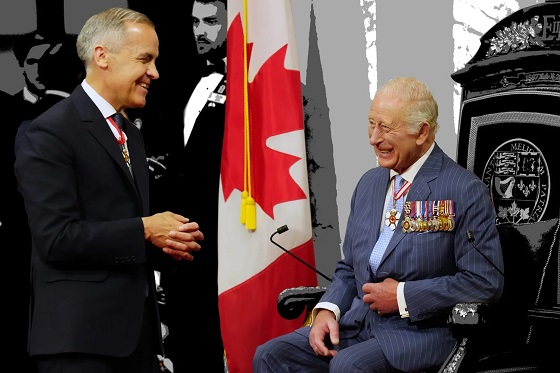
 Bruce Dowbiggin1 day ago
Bruce Dowbiggin1 day agoBe Careful What You Wish For In 2026: Mark Carney With A Majority





